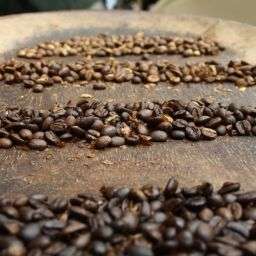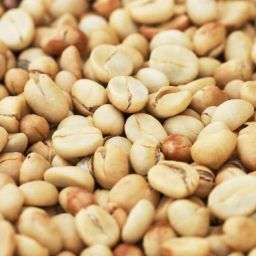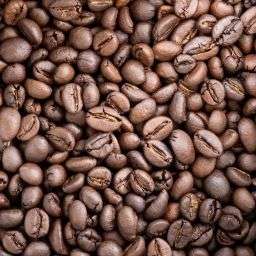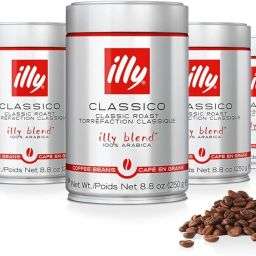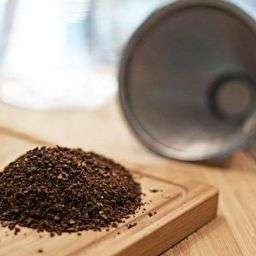
Exploring the intriguing blend of espresso beans in drip coffee brewing unveils a realm where the robust essence of espresso merges with the nuanced, gentle extraction of drip coffee. This fusion not only caters to the adventurous palates of coffee aficionados but also introduces a unique twist to the traditional drip coffee routine.
Utilizing espresso beans—known for their dark roast and bold flavor—in a drip coffee setup, promises a cup that stands out for its intensity and rich taste profile, thereby elevating the everyday coffee experience.
Understanding Espresso Beans
Espresso beans, often mistaken as a distinct category, are essentially coffee beans roasted specifically for espresso brewing. Their hallmark is a darker roast compared to beans used for traditional drip coffee, resulting in a rich, concentrated flavor with pronounced bitterness, and sometimes, notes of chocolate and caramel.
Unlike regular beans, espresso beans are ground to a finer consistency to withstand the high-pressure espresso brewing technique. This fine grind and intense roast contribute to espresso’s distinctive, bold taste and creamy texture, characteristics that can significantly influence the flavor profile of drip coffee when used in place of regular beans.
The Unique Appeal of Drip Coffee
Drip coffee, cherished for its accessibility and straightforward brewing method, involves pouring hot water over medium-ground coffee, allowing it to slowly percolate through and extract the coffee’s flavors and oils. This method yields a coffee that is generally lighter and more nuanced in flavor compared to the concentrated punch of espresso.
The contrast between drip coffee’s gentle extraction process and espresso’s high-pressure, intense method lies at the heart of what makes using espresso beans in drip brewing so appealing. It offers a bridge between two distinct coffee experiences, combining espresso’s depth and complexity with drip coffee’s smooth and accessible character.
The Art of Brewing Espresso Beans in Drip Coffee
Brewing drip coffee with espresso beans transcends conventional coffee brewing by integrating the potent flavors of espresso into the milder, more approachable drip coffee method. The key to mastering this technique lies in grind adjustment, water quality, and even distribution within the filter basket.
Adjusting the grind size to a coarser texture than typical espresso grind is crucial, as it accommodates the slower water flow of drip brewing, ensuring a thorough extraction without over-extraction or bitterness. Water quality, often overlooked, plays a pivotal role; using clean, cold water can significantly enhance the coffee’s taste by maintaining the integrity of the espresso bean’s robust flavors.
Furthermore, ensuring an even distribution of coffee grounds in the filter basket is essential for a balanced extraction, preventing water from channeling through the grounds unevenly and resulting in a coffee that is uniformly rich and flavorful.
Espresso Beans: Not Just for Espresso
Espresso beans, characterized by their dark roast and fine grind, are traditionally earmarked for espresso brewing. However, their use need not be confined to this method alone. The versatility of espresso roast beans shines when applied to various brewing techniques, underscoring that the grind size and brewing method hold more significance than the bean type itself.
Whether it’s a French press, pour-over, or even a cold brew, adjusting the grind size to suit the brewing method can unlock a spectrum of flavors from espresso beans, demonstrating their adaptability beyond the espresso machine. This flexibility invites coffee enthusiasts to experiment with their brewing routines, exploring the rich, intense flavors of espresso beans in a new light.
Practical Tips for Brewing Drip Coffee with Espresso Beans
To optimize the use of espresso beans in drip coffee brewing, several practical adjustments can enhance the resulting cup’s quality. Firstly, achieving the correct grind size is paramount; a medium to coarse grind is ideal, facilitating optimal water flow and flavor extraction.
The coffee-to-water ratio also demands attention, with a general recommendation of 1:15 or 1:16, ensuring a balanced strength and flavor profile. Adjusting brewing time and temperature can further refine the taste; a brewing temperature of 195 to 205 degrees Fahrenheit and a time range of 3 to 4 minutes are suggested to capture the essence of the espresso beans without introducing bitterness.
Experimentation with different espresso blends and ratios may be necessary to dial in the perfect cup, as the boldness and complexity of espresso beans can vary widely based on their origin and roast.
Potential Impacts on Flavor and Aroma
Utilizing espresso beans in drip coffee significantly enhances the beverage’s flavor and aroma, introducing a rich complexity often absent in regular drip brews. The inherent intensity and boldness of espresso beans, characterized by their dark roast, infuse the coffee with deeper, more pronounced notes of chocolate, caramel, and sometimes nutty or spicy undertones.
This intensity, when balanced with the nuanced extraction of drip brewing, produces a coffee experience that harmonizes the robustness of espresso with the subtlety and smoothness of drip coffee. The result is a cup that offers a unique sensory journey, with an aroma that is both inviting and complex, and a flavor that captures the best of both worlds.
FAQs
What is the perfect grind size for drip brew using espresso beans?
For brewing drip coffee with espresso beans, a medium to coarse grind is ideal. This size ensures proper water flow through the grounds, allowing for optimal flavor extraction without the bitterness associated with over-extraction.
How does drip coffee differ from pour-over coffee when using espresso beans?
The main difference between drip and pour-over coffee, especially when using espresso beans, lies in the brewing technique and control over the extraction process. Drip coffee makers automate the water distribution, often resulting in a consistent but less customizable brew.
Pour-over methods, on the other hand, offer more control over the pouring speed and water temperature, allowing for a more tailored extraction that can highlight the espresso beans’ rich flavors.
Final Thoughts
The exploration of using espresso beans in drip coffee brewing reveals a delightful synergy that elevates the coffee drinking experience. This approach not only diversifies the flavor profile of drip coffee by introducing the depth and intensity of espresso but also showcases the versatility of espresso beans beyond their traditional use.
The resulting brew is a testament to the dynamic range of coffee flavors, offering a cup that is rich, aromatic, and satisfyingly complex. Embracing espresso beans in drip coffee is an invitation to explore the broader spectrum of coffee’s culinary potential, inviting both connoisseurs and casual drinkers to enjoy a more enriched and flavorful cup.



